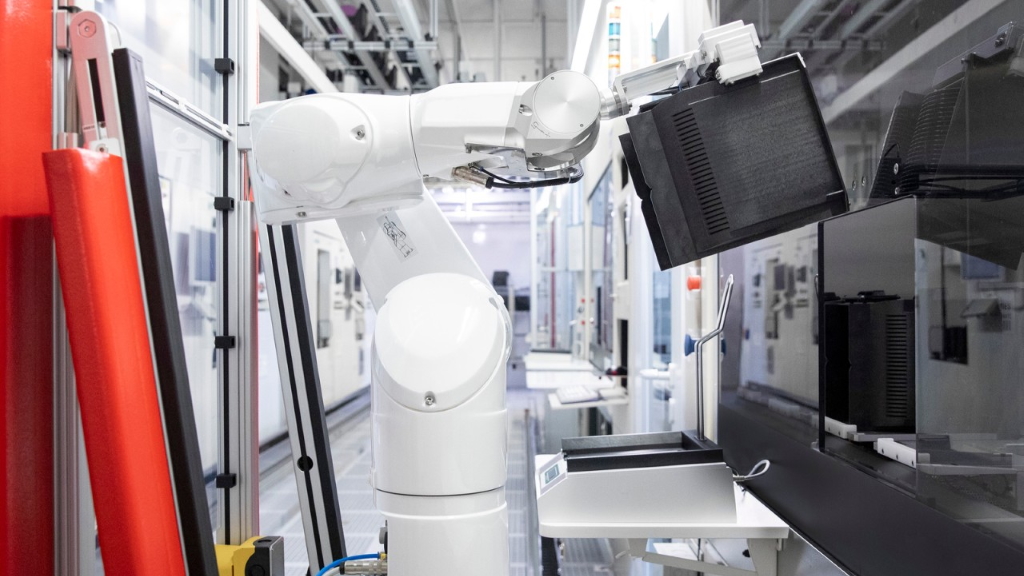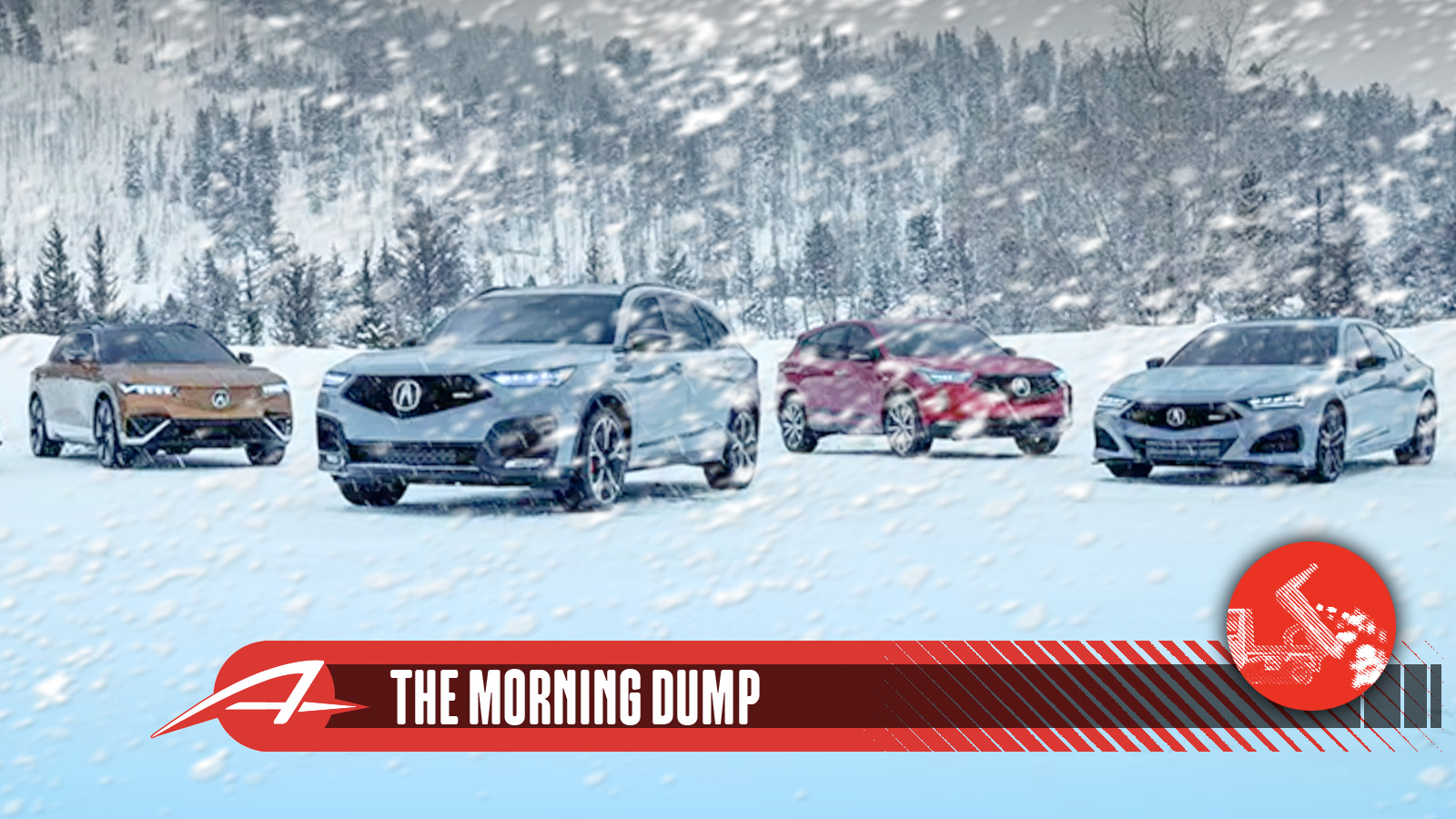I’ve been struggling describe the world that’s forming in response to the burst of the EV hype bubble in the West, the rise of China, and the return of protectionism. The best I can come up with is that we’re entering an Ice Age.
Today’s Morning Dump is going to try to center this all in the Late Pleistocene era, which means that some people are going to do very well, while others struggle. Mostly, it’s the giants that are going to suffer and, in particular, the ones that aren’t well represented in the United States.
Up top is Bosch, the massive supplier that was once one of the world’s leaders in engineering. It just laid off 13,000 people in a massive hit to the European economy. Do we blame the extinction of large mammals in this period on humans or on some sort of comet? Jaguar Land Rover definitely feels like it got nuked from space, though it’s definitely a human cause.
Companies with a large footprint in North America will almost certainly do better, though it remains to be seen where Canada and Mexico fit into all of this. And, finally, how does this impact the market next year?
Okay campers, rise and shine, and don’t forget your booties ’cause it’s cold out there…
Robert Bosch And The Late Pleistocene

There have been too many Ice Ages to just say that we’re entering an Ice Age. Which one? It’s also important to state clearly that I don’t think this means things are going to be cold and bleak for everyone. Humans eventually flourished in this period, and I think there will be a lot of species/companies that will do extremely well.
I’m talking about the last one, aka the Pleistocene epoch. More specifically, the Late Pleistocene into the Holocene epoch. You see, 2.6 million years ago, it got cold, and there was an ice age. Our planet is a mighty big place, and not all of it was covered in ice, but it was a big change for all living organisms. Towards the end, homo sapiens got great at hunting, then planting things, which resulted in the rise of our period of control over the planet. We developed civilization, which led to computers, which led to The Autopian.
Though many will prosper, there will be other companies and whole sub-industries that probably suffer. The causes are many, and I think what will happen is a period of cooling/freezing in some parts of the auto industry and a rapid expansion in other parts.
What are the causes?
- The rise of Chinese automotive independence
- The false start of EV and self-driving in the West
- The resulting new protectionism
If only there were one company that represented all of these issues at once. Ah, I know: Robert Bosch GmbH. Large mammals like the woolly mammoth were wiped out during the late ice age, and Bosch looks to me a lot like a woolly mammoth.
The company just announced a massive layoff on the order of 13,000 positions, mostly in the automotive and self-driving sectors.
From Bosch itself:
The economic environment, which has already been under great pressure for some time, as well as the market conditions for Bosch Mobility have recently become even more challenging. The global vehicle market continues to see subdued development. The lack of a regulatory framework is making it difficult to establish new technologies, such as hydrogen. Moreover, the market penetration of emerging technologies such as electromobility and automated driving is also experiencing considerable delays and demand in Bosch’s sales markets is shifting extensively to regions outside Europe. Added to this are the ongoing structural changes and very high price and competitive pressures in the global automotive industry. At the same time, in this challenging market environment, Bosch Mobility also has to make very substantial investments in its future and finance these largely from its own resources. As already communicated, all this is resulting in an annual cost gap of around 2.5 billion euros worldwide in our Mobility business.
Bosch intends to take various measures using all levers to reduce costs at all levels as quickly as possible in order to close the cost gap in the near future. The company sees great potential to reduce costs by achieving productivity gains through the use of artificial intelligence in manufacturing and engineering, reducing material and equipment costs, reducing capital expenditure, and making logistics and global supply chains more efficient. In addition, structural and personnel adjustment measures are unavoidable – the company anticipates a further reduction of around 13,000 jobs, particularly at its Mobility locations in Germany. The time frames for the necessary adjustments vary and extend until the end of 2030.
What’s not mentioned there is China, but Bosch is a major supplier for German automakers, and those German automakers are getting kicked in the teeth by China. This Bloomberg article brings the two together:
Carmakers and their suppliers are struggling with waning demand, high labor and energy costs and intensifying competition from fast-moving Chinese manufacturers. They’ve poured billions of euros into battery technology only to find out that the shift to electric vehicles will be slower than expected.
The pressures are forcing manufacturers to make painful cutbacks. Bosch’s peers Continental, Schaeffler and ZF Friedrichshafen are also slashing jobs and expenses, while VW, Porsche AG and Ford Motor Co. are reducing staff and output to offset weak sales and President Donald Trump’s tariffs, which are intended to boost manufacturing in the US. Trump’s newly announced duties on heavy trucks on Friday dragged down the shares of Daimler Truck and VW’s Traton.
There is actually a lot of debate over what caused the major disruptions at the end of this last Ice Age, though everyone agrees that it brought along the extinction of the last of the Megafauna (giant animals). It’s generally thought that climate change played a massive role, unsurprisingly, but also human overhunting seems to be a factor.
As North America transitioned to more open woods, it was much better to be an animal that’s smaller and quicker, like deer. But being smaller and quicker wasn’t always enough, as even the jaguars eventually didn’t make it.
Humans Definitely Caused The Jaguar Land Rover Cyberattack

Jaguar Land Rover will start to build cars soon, but the company and the British car industry simply aren’t big enough to absorb the impact of human hunting (in the form of a massive cyberattack) on its own.
Again, from Bloomberg:
Jaguar Land Rover Automotive Plc is set to start making cars again after securing £3.5 billion ($4.7 billion) in loan commitments as it continues to grapple with the fallout from a crippling cyberattack.
Britain’s largest carmaker said some sections of its production operations will resume “in the coming days,” as it works to get all its systems back up and running. The Range Rover maker — whose plants in the UK, Slovakia, India and Brazil have been out of action since the start of the month — had been targeting a Wednesday restart.
The move comes as JLR got a £1.5 billion loan guarantee from the UK government and sought to raise a further £2 billion from banks to shore up its finances during the shutdown. The carmaker, owned by India’s Tata Motors Ltd., is a key part of the UK’s auto industry, with some small suppliers reliant on it for business. The government stepped in over the weekend to avoid a wave of collapses in the supply chain.
If only the giant sloths had a modern democratic government to prop them up, eh?
The British car industry has largely been hollowed out and sold off over the years, so what’s there needs help to be protected. In spite of this, JLR specifically, and the UK, generally, are not in the worst position.
When it comes to China, no longer being part of the EU is actually probably helpful in terms of being able to import a larger range of cars and set its own trade deal without having to worry about protecting the VWs and Bosches of the world. The UK also scored a great trade deal with the United States, having survived protectionism in that sense.
The EV transition might impact Jaguar, but the UK has barely been a leader on either self-driving or electrification. Why build cars when laundering money seems so much easier? Now that’s what I call adaptation!
What Happens To North American Companies?

The protectionism of Trump’s first term continued into Biden’s single term, which leads me to believe that some of this is inevitable. Unless the unlikely happens and we get a new President who can convince the world of the merits of MMT, I think even a fully Democratic/left government in Washington in 2028 would look at the deficit and probably decide to keep some tariffs in place. A Republican one definitely will.
Evolution and migration are messy and rarely happen in a straight line. The end of the last Ice Age brought the first people from Asia (though there’s a lot of debate about exactly when/how) through what is now Canada, into the United States, and then south to Mexico and South America.
I think that the question in this period is: Do automakers with exposure to Mexico and Canada continue to do well? With the United States-Mexico-Canada Agreement (USMCA) up for renegotiation soon, is the United States going to be flooded with a bunch of new plants?
The goal of the Trump Administration is to bring all sorts of factories to the USA from those places, and some of this is happening, though the degree to which this is bringing new plants here and merely balancing global portfolios to avoid tariff impacts is not yet clear.
From the CBC, a few doubts remain:
David Adams, president of Global Automakers of Canada, disputed Trump’s claims that automakers are leaving Canada for U.S. plants, and said jobs are holding steady.
“The notion that everybody is vacating Canada to produce in the U.S. doesn’t jibe with reality on the ground,” he said.
Adams said Trump’s aggressive tariffs could eventually reshape North American auto production, but added, “we’re not there yet.”
It’s going to take a while to know what exactly happens, and a lot will depend on what kind of deal Canada and Mexico can get out of the United States.
The Ice Age Is Also The ICE Age

I’m sorry, I couldn’t avoid the wordplay. The Automotive Ice Age is also an ICE Age, at least in the United States. The walking back of environmental regulations means that it’s going to be easier, for a time, for automakers with large internal combustion engine portfolios to do well (especially those with hybrid technology).
It’s not hard to think of companies that could do quite well in this new paradigm. Ford has both hybrid technology and the biggest manufacturing footprint in the United States. Honda and Toyota, as well, both have hybrid technology and a lot of manufacturing stateside.
For others, it’s going to be tougher. It’s why some analysts see a slower 2026 as the industry adjusts to all this uncertainty.
Per Wards Auto:
Cox Automotive expects U.S. auto sales to drop by low single-digit percentages in late 2025 and into 2026, mainly driven by price increases, driven in turn by new tariffs on auto imports and metals – an outcome Jonathan Smoke, chief economist for Cox Automotive, describes as “not so bad,” considering the circumstances.
“Prices will rise, and volumes will decline,” Smoke says during a recent webinar during which Cox Automotive reviews auto sales in the third quarter, fine-tunes its sales forecast for full-year 2025 and hints about the U.S. auto sales forecast for 2026.
Smoke also lists some reasons for business optimism going forward, including lower interest rates, lower taxes and less regulation. “Any of those alone would be considered stimulative” to the economy and auto sales, Smoke says.
Again, the late Ice Age was bad for some and good for others. It’s clear that Stellantis sees upside for itself in this new world where it can sell all the Hemis it can build, and has less pressure to sell an electric truck.
I’m hopeful for Stellantis in the short term, but I’m not sure where the company goes over the longer period.
General Motors may lack hybrids, but it has a robust EV lineup it can lean on if/when EV sales come back, as well as trucks. Ford has a big moonshot EV project for the long run, hybrids for the interim, and the ability to build trucks forever. Stellantis has… Hemi V8s.
What I’m Listening To While Writing TMD
This week is going to be all songs that make me feel some sort of way, and right up top is “Up The Junction” by Squeeze. Hits me in the feels every time.
The Big Question
What’s the outcome here? Is this a terrible metaphor? Who does well?
Top photo: Acura








You write a lot about economics without knowing anything. You are probably one of the most pessimistic people I’ve ever read with a consistent reading base.
It’ll be okay Matt. The world changes, but we keep moving on.
As long as it is not the age of Immigration and Customs Enforcement…
Not an inaccurate metaphor. I would say however that some shit seems to happen every 5 years. From societally-adjusting recession (looking at you 2008) to a world pandemic etc there’s always some extinction-level event. Just that now a couple or more seems to be converging.
We could also have yet to see more disruptions? The way politics are now, maybe VW exits cars entirely and starts making military equipment. They will shine there with their vast Diesel expertise.
Until the chief-of-chaos is gone, there will be considerable continued chaos worldwide unsettling “settled” agreements over everything in every industry. Well, until the rest of the world figures out how to completely avoid the US for both buying and selling. And they are engaged in doing that already. Sowing chaos is the only thing he is good at.
Love that early Squeeze stuff. I don’t know why it sounds like it was recorded through a tin can telephone, but maybe it’s part of the charm.
About Hydrogen. It gets a ton of flack, but there is supposed to be a way forward on it.
Hydrogen is made naturally in a water modulated nuclear reactor. It’s actually one of those things that everyone in the industry has to work to prevent.
Per studies I’ve read, it would take only 3 current reactors to replace the entire current hydrogen supply requirements and these plants would still produce 94% of their name plate power while making all that hydrogen.
So, for long haul trucks, ships, etc. a change to hydrogen could be done economically and carbon free with nuclear power.
IN THEORY
I work in the nuclear industry. There’s a lot of buzz about making hydrogen. But the current rules are all setup to NOT make hydrogen. To make hydrogen would take a lot of changes in rules. It would also require a lot of cultural changes to make everyone to think that hydrogen doesn’t mean a horrible day. Making those changes is hard and very expensive.
Ultimately, there is a chicken and egg thing. It’s going to take a lot of money to make hydrogen with a nuclear plant. And until there is a big fleet of vehicles demanding that hydrogen, it isn’t worth spending the money to do the conversion. On the other hand, until there is a giant amount of hydrogen available on the cheap, nobody is going to build a fleet of vehicles that demands it.
Euh… nope,
In a water modulated nuclear reactor, hydrogen is made naturally in trace amounts when water molecules are split due to radiation. This is a problem, but industry works to cope without real problem.
In a water modulated nuclear reactor that is in big trouble (e.g. Fukushima disaster), ultra high temperatures makes the zirconium cladding from the fuel rods oxidize with the oxygen atoms in the water molecules. Some reactors have features to vent this hydrogen and recombine it with oxygen from the air, rendering it back harmless.
So hydrogen from nuclear is mostly seen as a way to use low-demand electricity in an electrolyser. This makes sense because of the great difficulty of rapidly adjusting the power in a nuclear power plant to follow demand.Just use excess power instead of avoiding producing it.
So, I read deeper. I was wrong..
LWRS Report Template
The way it is working (at 3 plants right now as an experiment) is two methods.
Method 1 is to use the waste heat to heat up water to elevated temperatures to make it easier to split into hydrogen and oxygen with electricity. Method 2 is to use excess steam to heat the water to a significantly higher temperature before the electrolysis.
Method 1 uses more electricity than Method 2, but Method 2’s use of steam means the plant makes less electricity. There are 3 units currently making electricity by one or the other method.
The initial goal was to make hydrogen for under $2/ton, which is being done with the $1.78/ton currently. The “earthshot” goal is to drop the price to under $1/ton.
NuScale (a SMR designer that says they are a couple years from having a first operating reactor) is going one step further. Their plan is to generate power, process sea water into fresh and generate hydrogen from the resulting brine to reduce brine waste with the same plant. I’m sure the exact process is a trade secret.
When I first read of this process years ago, the idea was to run the core levels lower to allow radiation to interact with the steam and intentionally make hydrogen in the core. Which I saw no way of a power plant wanting to do. But with the waste heat, excess steam capacity and excess electricity generation going into a different building designed to generate hydrogen, I can see this being much more feasible since you aren’t intentionally generating hydrogen in the nuclear island.
Interesting! That makes sense.
The using brine to make hydrogen doesn’t to me, but I got really bad grades in chemistry.